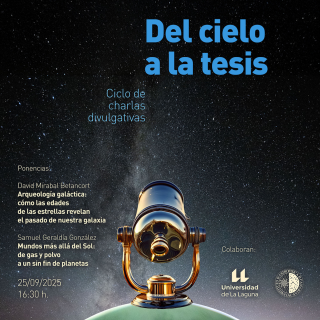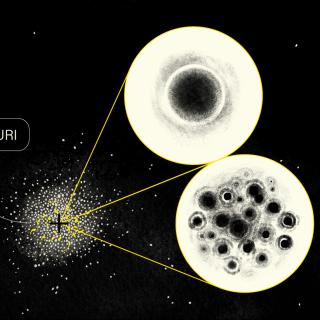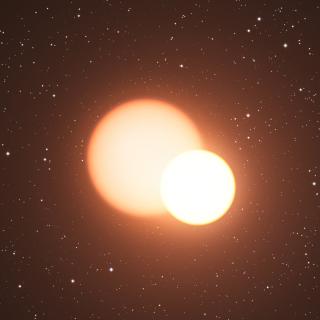It may interest you
-
 The Museum of Science and the Cosmos (MCC), part of the Autonomous Organization of Museums and Centers of the Cabildo of Tenerife, will host the second session of the scientific outreach series “From the Sky to the Thesis” on Thursday, September 25, at 4:30 p.m. The series is organized in collaboration with the University of La Laguna (ULL) and the Institute of Astrophysics of the Canary Islands (IAC). The initiative, promoted by doctoral students from the IAC, seeks to bring the main topics of research in astrophysics closer to the public, told in the first person by those who develop themAdvertised on
The Museum of Science and the Cosmos (MCC), part of the Autonomous Organization of Museums and Centers of the Cabildo of Tenerife, will host the second session of the scientific outreach series “From the Sky to the Thesis” on Thursday, September 25, at 4:30 p.m. The series is organized in collaboration with the University of La Laguna (ULL) and the Institute of Astrophysics of the Canary Islands (IAC). The initiative, promoted by doctoral students from the IAC, seeks to bring the main topics of research in astrophysics closer to the public, told in the first person by those who develop themAdvertised on -
 Omega Centauri is a large globular cluster, containing almost ten million stars, in the direction of the constellation of Centaurus, which has been studied to understand its stellar kinematics, the motions of its stars under the action of the gravitational forces which act on them. A research team at the Instituto de Astrofísica de Canarias (IAC) has just published a study which shows that a group of black holes dominates the movements of its stellar kinematics. This result can be extended to certain other structures in the universe and goes against some previous claims about the role of lowAdvertised on
Omega Centauri is a large globular cluster, containing almost ten million stars, in the direction of the constellation of Centaurus, which has been studied to understand its stellar kinematics, the motions of its stars under the action of the gravitational forces which act on them. A research team at the Instituto de Astrofísica de Canarias (IAC) has just published a study which shows that a group of black holes dominates the movements of its stellar kinematics. This result can be extended to certain other structures in the universe and goes against some previous claims about the role of lowAdvertised on -
 An international team of astronomers, including researchers from the IAC, have performed a unique cosmic test - measuring the mass of an ancient star using two entirely different methods, finding agreement to within just 1.4%. This result marks a milestone in our ability to determine the ages of old stars and use them as living fossils to study the Milky Way’s distant past. The team analysed the red giant in the binary system KIC 10001167 using two independent approaches: firstly, by measuring the brightness and radial velocity variations due to the orbital motion of the binary, and secondlyAdvertised on
An international team of astronomers, including researchers from the IAC, have performed a unique cosmic test - measuring the mass of an ancient star using two entirely different methods, finding agreement to within just 1.4%. This result marks a milestone in our ability to determine the ages of old stars and use them as living fossils to study the Milky Way’s distant past. The team analysed the red giant in the binary system KIC 10001167 using two independent approaches: firstly, by measuring the brightness and radial velocity variations due to the orbital motion of the binary, and secondlyAdvertised on